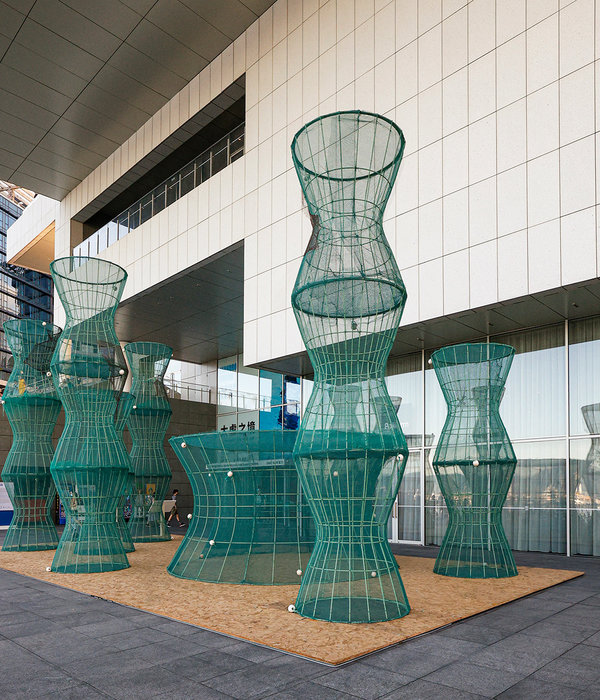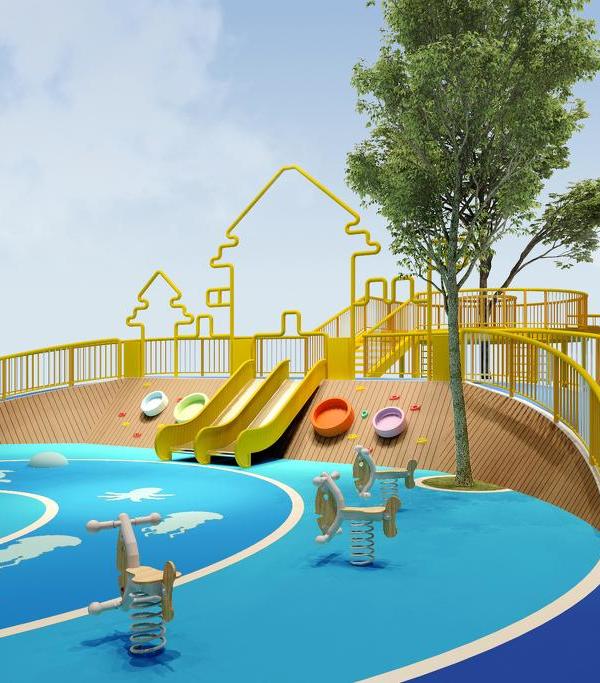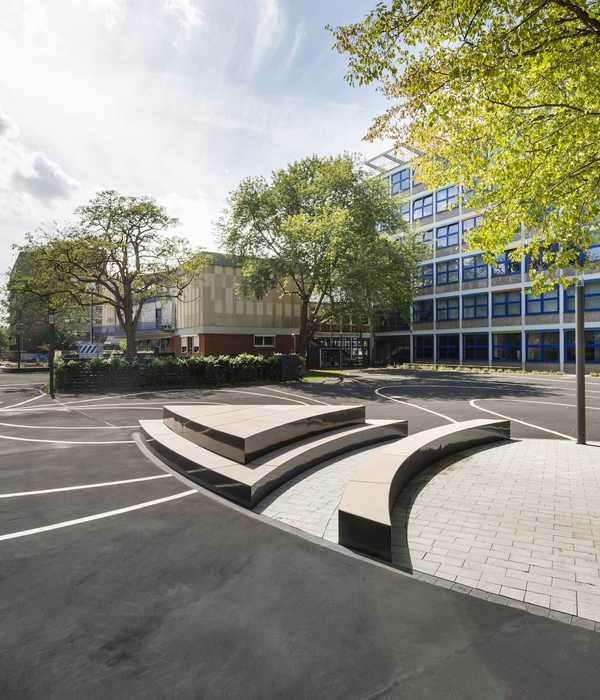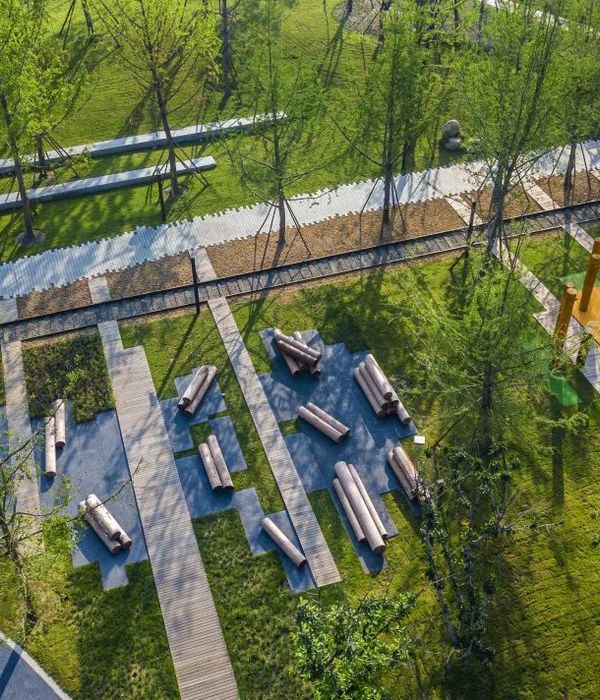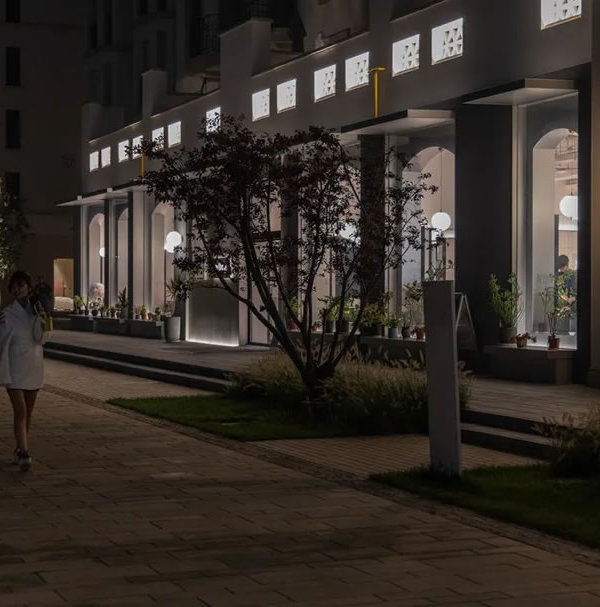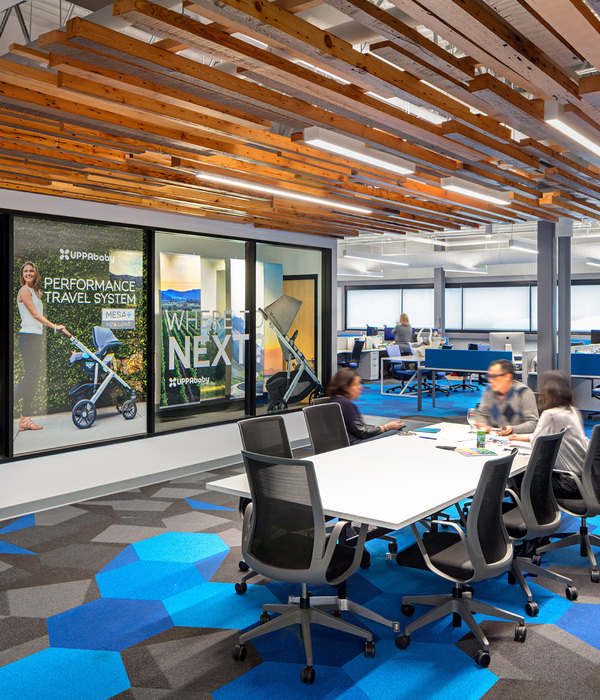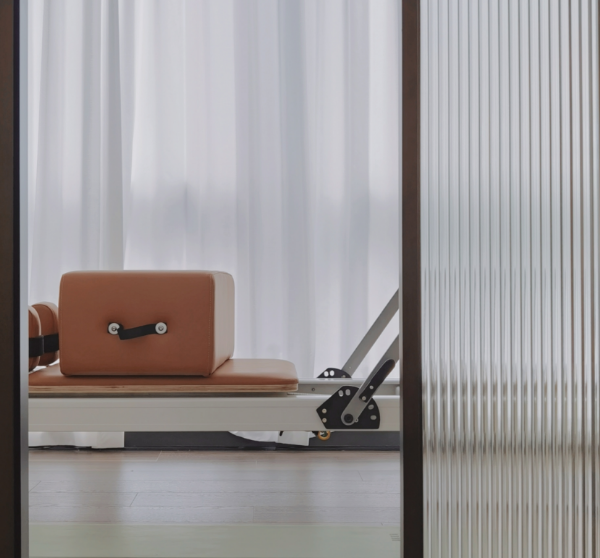- 项目名称:深圳翠竹公园文化广场
- 设计方:都市实践建筑事务所
- 设计时间:2005-2006
- 建造时间:2008-2009
- 项目规模:6870平方米
Jade Bamboo Culture Plaza
设计方:都市实践建筑事务所
位置:广东 深圳
分类:广场
内容:实景照片
图片来源:Meng Yan
项目经理
:Xing Guo
设计时间:2005——2006
建造时间:2008——2009
项目规模:6870平方米
图片:18张
深圳在大规模开展城市建设以前还不过是一座小小的山城,而如今,人们已经很难再找到深圳以前的城市面貌了。然而深圳翠竹公园是市中心极少数还保留着该城市原有地貌和植物的地方之一。
翠竹公园北入口需要借助某高级住宅区的空地才能将公园和公园北部公路平缓的连接起来,于是经政府谈判后,该地的住宅开发商同意将这块空地作为城市公共场所之用。作为补偿,政府也同意开放商在这个公共广场下面兴建50个车位的停车场。
这块空地的边缘形状不规则,而且从北到南的高度相差了近13米,与城市大厦相连的半开放式广场也比街道路面高了3米。基于这样的场地条件,设计师保留了空地的原有地貌,并采用了中国传统的竹林
庭院设计
方法,使这个地方不仅适合小孩们玩游戏,也适合老人下棋、打太极、演奏表演等。从庭院东北角开始,一条露天走廊像虚线一样沿着土墙,蜿蜒地爬过山坡,通往坡顶,最后到达公园的入口。走道和土墙之间形成多处三角区域,这重新界定了公园的东部边界。在这些三角区域中,竹子、花卉和树木形成了一幅幅美丽的中国图画。行走于此道,真可谓是达到步移景异的艺术效果,让人们在行走间领略中国传统园林的精华。
这条走道还将陡峭地坡道划分成若干个形状各异的种植区,当地的居民和小孩可以来这里体验种植的乐趣,同时还有助于增强大家的环保意识。
远离城市的喧嚣,到竹林中品味休闲的乐趣,这不正是人们希望的回归田园的生活吗?这种精神上的回归将传统自然和现代城市连系在一起,所以说翠竹公园文化广场不仅是一座现代中国园林,同时也是深圳市自然面貌的见证。
译者: 饭团小组
Before the launch of large-scale urban construction Shenzhen was formerly hilly country. Today, it is difficult to see the original landform distinguished from the even city pattern. The Jade Bamboo Garden, which has insufficient connections with the surrounding streets, is one of the few areas partly retaining the original landform and vegetation in the urban center.
The north entrance of the Jade Garden needs to share the remaining land after development of some high-class residential area to actualize a connection with the north roads. After negotiating with the government, the developer agreed to designate the area for urban public space. As compensation, the government agreed to build 50 parking spaces for the developer underneath this public square.
The site has an irregular shape, and the altitude difference of the slope from north to south is almost 13 meters. The semi-open square connected with the city towers above the streets ground about 3 meters above the street. The design keeps the former hilly landform of the site, using traditional form of the Chinese courtyards to create bamboo islands throughout. Such space allows not only the children to play hide-and-seek and other games, but also the old people to play chess, Tai Chi and to perform community music. Starting from the northeast corner of the courtyard, an outdoor corridor shape, like a broken line is built along the existing retaining wall, climbing sinuously on the hillsides, leading to the peak, and extending to the new entrance of the park. There is a series of triangle spaces between the corridor and the wall, redefining the east boundary of the park. Within these defined spaces, bamboo, flowers and trees are mixed together to form amazing Chinese painting pieces. Walking in the corridor, one step together with one scene – the series of spatial experience is the essence of the traditional Chinese garden.
The uplifted corridor cuts the narrow slope into several cultivated terraces with various shapes. Flowers, grass, and crops planted on the terraces encourage local residents and children to come and experience the fun of planting, while the public was led to participate in creating and protecting the community environment as far as possible.
Jumping from the bustle of city life to the rural practice and leisure activities in the bamboo grove shows people’s desire of returning to the countryside and being away from the maddening crowd. This spiritual return creates a link between the traditional nature and the modern city. The Jade Cultural Square is a modern Chinese garden that not only brings people experiences of serenity, but also witnesses and commemorates the original natural environment of the City of Shenzhen.
玉竹文化广场景观外部局部图
玉竹文化广场景观外部街道图
玉竹文化广场景观
玉竹文化广场景观模型图
玉竹文化广场景观图解
{{item.text_origin}}



